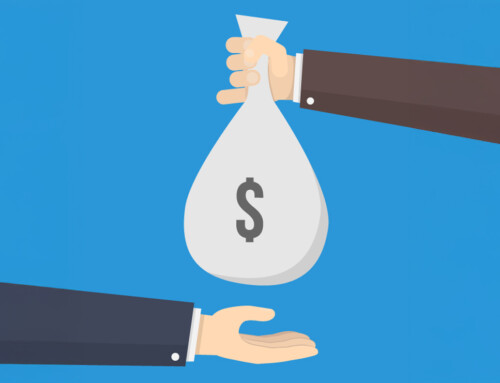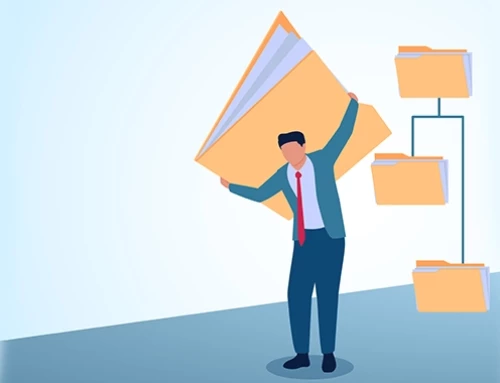Contents
Acquiring properties and assets has become easier with the availability of loans. However, it is crucial to be aware that the lender has a legal right to reclaim possession through liens registered on the purchased property. If you are not familiar with the concept of a ‘lien’ or if your home, car, or other assets are subject to liens, it is important to understand it better. Our blog post aims to clarify the term by detailing the various types of liens, and explaining when, how, and against whom a lien can be filed.
Filing a lien is a legal procedure that allows a person to make a claim against a property as a security for a debt owed. The process can differ depending on the jurisdiction, type of lien, and the circumstances of the debt. It is crucial to follow the correct procedures meticulously to ensure that your lien is valid and enforceable. Contractors, subcontractors, suppliers, and other professionals use this legal process to file a lien on a property to guarantee that they are paid for services rendered in improving that property.
Different Types of Liens
Liens are legal claims or rights against property, typically used as security for the repayment of a debt or obligation. They can affect how property is transferred or used and can be voluntarily agreed upon or imposed by law. The main types of liens include:
Mortgage Liens: This is a voluntary lien on real estate property as security for the repayment of a mortgage loan. The lender (mortgagee) has the right to take possession of the property if the borrower (mortgagor) fails to repay the loan according to the terms of the mortgage agreement.
Mechanic’s Liens: Also known as construction liens, these are claims made by contractors, subcontractors, or suppliers who have performed work or supplied materials to improve a property and have not been paid. These are statutory liens, meaning they are granted by statutes in each state.
Judgment Liens: Resulting from a court judgment, these liens are placed on property owned by the defendant in a lawsuit as a means to secure payment of the judgment amount.
Consensual or Voluntary Liens: As the name suggests, these are liens that the property owner agrees to, typically as part of securing a loan. Mortgage liens can fall under this category, where the borrower agrees to the lien on their property as collateral for the mortgage.
Non-Consensual or Statutory Liens: These are imposed by law without the property owner’s explicit consent, such as tax liens and mechanic’s liens.
Maritime Liens: Unique to maritime law, these liens are placed on ships for unpaid debts related to the ship, such as repairs, supplies, or crew wages.
Agricultural Liens: Specific to the agricultural industry, these liens are placed on farming products or equipment to secure payment for supplies, services, or loans.
Tax Liens: Imposed by government entities for unpaid taxes on a property, tax liens can include federal tax liens for unpaid federal taxes, state tax liens for unpaid state taxes, and property tax liens for unpaid local property taxes. Tax liens generally have priority over other types of liens.
How to Remove a Tax Lien from Public Records?
Removing a tax lien from public records generally involves a few key steps, but the exact process can vary depending on the jurisdiction and the type of tax lien, such as federal, state, or local. To remove a tax lien, you can follow these general steps:
- Pay the tax debt in full. This is the easiest way to remove the lien, as once the debt is paid, the taxing authority should release the lien. If you cannot pay the full amount, you may explore other options like setting up a payment plan, but the lien usually remains until the debt is fully satisfied.
- Obtain a Release of Lien. If it is a federal tax lien, the IRS will issue a Certificate of Release of Federal Tax Lien within 30 days of the debt being fully paid or otherwise satisfied. For a state or local tax lien, the process and timeline may vary, so you’ll need to contact the relevant state or local tax authority for guidance.
- Verify the Release with Local Records. After obtaining a release of the lien, check with the local county recorder’s office (or similar authority where the lien was filed) to ensure that the lien release is correctly recorded. If not, you may need to submit the lien release document yourself. There may be a fee associated with recording the lien release.
- Check Your Credit Report. Tax liens can negatively affect your credit score. While paid tax liens may be removed from your credit report, the specifics can depend on the credit bureau’s policies and the type of lien.
- Request Removal: If a paid tax lien is still showing on your credit report, contact the credit bureaus with proof of the lien release to request its removal.
- Credit Repair Agencies: Some individuals opt to use credit repair agencies to assist with this process but be cautious and thoroughly research any service provider.
- Special Circumstances: Withdrawal of the Lien. In some cases, you might qualify for a withdrawal of the lien, which removes the public notice and ensures that the lien does not impact your credit score.
- IRS Fresh Start Program: For federal tax liens, the IRS may withdraw a lien if you meet certain conditions under the Fresh Start program, such as setting up a Direct Debit Installment Agreement.
- State Programs: Some states have similar programs, so check with your state tax authority.
- Legal or Professional Assistance. Given the complexities involved in dealing with tax liens, consulting with a tax professional or attorney can be very beneficial. They can provide guidance specific to your situation, help negotiate with taxing authorities, and ensure that all necessary steps are taken to clear the lien legally and efficiently.
- Stay Proactive. Finally, staying proactive about your tax obligations can prevent future liens. This includes filing returns on time, making timely payments, and immediately addressing any notices from tax authorities.
Steps and Procedures to File a Lien
Filing a lien involves a series of legal steps designed to secure a debt or claim against property, typically real estate, or personal property. The specific procedures can vary significantly depending on the jurisdiction and the type of lien (e.g., mechanic’s lien, tax lien, judgment lien). However, I’ll outline the general steps and procedures commonly involved in filing a lien. Note that it is important to consult with a legal professional in your specific area to ensure compliance with local laws and regulations.
General Steps to How to File a Lien
-
Determine Eligibility
- Type of Lien: Understand the type of lien you are eligible to file. For instance, contractors might file a mechanic’s lien for unpaid work on a property.
- Legal Grounds: Ensure you have a valid reason to file a lien, such as unpaid debt that is directly connected to the property.
-
Notice of Intent to Lien
- Preliminary Notice: In many jurisdictions, you’re required to send a preliminary notice to the property owner informing them of the outstanding debt and your intention to file a lien if the debt is not settled.
-
Filing the Lien
- Documentation: Prepare the necessary documents, which typically include details about the debtor, creditor, amount owed, and description of the property.
- Filing With the County Recorder: File the lien documents with the county recorder’s office or the appropriate local government entity. There may be a filing fee.
- Timing: Be aware of the timeline for filing a lien, as there are often strict deadlines from the time the debt becomes due, or the work is completed.
-
Notice of the Lien
- Inform the Property Owner: After filing, send a copy of the lien to the property owner. Some jurisdictions require this step to be done within a specific timeframe.
-
Enforcement
- Duration: Liens do not last indefinitely; they typically have an expiration date unless you take further action.
- Foreclosure: To enforce the lien, you may need to initiate foreclosure proceedings, which can lead to the sale of the property to satisfy the debt. This step requires legal action.
-
Release of Lien
- Upon Payment: Once the debt is paid, you must file a release of the lien with the same office where the original lien was filed.
Considerations
- Legal Requirements: Because the specifics can vary widely, it is essential to understand the local laws and requirements for filing a lien.
- Seek Legal Advice: Given the complexity and legal implications, consulting with a legal professional is advisable to navigate the process.
This overview provides a broad sketch of the process involved in filing a lien. Given the legal complexities and variations in laws from one jurisdiction to another, engaging with a lawyer who specializes in liens and property law in your area is crucial for specific guidance and to ensure the process is handled correctly.
Who Can You Initiate a Lien Against?
A lien can be filed against a variety of parties depending on the circumstances and the type of lien. Here are the most common scenarios:
- Property Owners: In the case of mechanics’ liens or construction liens, contractors, subcontractors, or suppliers can file a lien against a property if they have not been paid for work performed or materials supplied for that property.
- Vehicle Owners: If someone has not paid for repairs or improvements made to a vehicle, a mechanic or auto shop might be able to place a lien on the vehicle.
- Debtors: For judgments involving debts, a creditor can sometimes place a lien against the debtor’s property (real estate or personal property) as a way to secure payment.
- Business Owners: In cases where a business owes money to creditors or the government for taxes, a lien can be placed against the business assets.
- Homeowners: For unpaid homeowners association (HOA) fees or assessments, an HOA may place a lien against a homeowner’s property.
- Taxpayers: If taxes are unpaid, the IRS or state tax authorities can place a tax lien against an individual’s or business’s assets.
- Borrowers: In the context of loans, a lender may place a lien on collateral pledged for a loan if the borrower defaults.
The process and requirements for initiating a lien vary significantly depending on the jurisdiction and the type of lien. Generally, it involves providing notice to the party against whom the lien is to be filed, filing the lien with a local court or government agency, and sometimes proving the validity of the debt or claim in court. It is often advisable to consult with a legal professional when considering the initiation of a lien due to the legal complexities involved.
Steps to Clear a Lien from Your Property
Removing a lien from your property typically involves a few key steps, although the specific process can vary depending on the type of lien and the laws of your jurisdiction. Here is a general outline of what you might need to do:
Pay the Debt: The most straightforward way to remove a lien is by paying off the debt that the lien is securing. This could mean paying the full amount owed, plus any additional fees and interest.
Negotiate a Settlement: If you’re unable to pay the full amount, you might be able to negotiate a settlement for less than what is owed. This can be especially true for liens resulting from judgments or debts to contractors.
Dispute the Lien: If you believe the lien was filed in error, or if you have already paid the debt, you can dispute the lien. This might involve filing a lawsuit to have the lien removed. It is essential to have documentation to support your case, such as proof of payment.
Bond Off the Lien: Some jurisdictions allow you to remove a lien from the property by posting a bond for the amount of the lien. This doesn’t eliminate the debt but removes the lien from the property’s title, allowing for refinancing or sale. The debt is then tied to the bond rather than the property.
Wait for the Lien to Expire: Liens don’t last forever. Most have an expiration date, after which the lienholder must either renew the lien or lose their security interest in the property. However, relying on this method can be risky, as the lien affects your ability to sell or refinance the property and the lienholder might take further legal action to collect the debt.
File a Release of Lien: Once the debt is paid or otherwise resolved, the lienholder is typically required to file a release of lien with the same authority where the original lien was filed. This document formally removes the lien from your property’s title.
Get Legal Advice: Considering the complexity of lien laws and the potential for significant financial impact, consulting with a legal professional is highly advisable. An attorney can help you understand your rights, the specifics of your situation, and the best course of action.
It is important to address liens promptly, as they can affect your credit score, your property’s title, and your ability to sell or refinance your property.
Consequences of Filing a Lien
Filing a lien on a property or asset as a means to secure payment for a debt can have significant legal and financial consequences for both the lienholder (the person or entity filing the lien) and the property owner. These consequences vary based on the jurisdiction, the type of lien, and the specifics of the situation.
For the Property Owner
- Restricted Sale or Refinance: A lien creates a claim on the property, making it difficult for the owner to sell or refinance without first clearing the lien. This is because most buyers or lenders will require a clear title before proceeding with a sale or a loan.
- Damaged Credit Score: Depending on the type of lien and the jurisdiction, the lien may be reported to credit bureaus, negatively impacting the property owner’s credit score. This can make it harder for the owner to obtain financing in the future.
- Forced Sale of Property: In some cases, if the debt is not paid, the lienholder may be able to force the sale of the property through a legal process to recover the owed money. This is a more common outcome with certain types of liens, such as tax liens.
- Legal and Financial Burden: The process of resolving a lien, whether through payment, negotiation, or litigation, can be time-consuming and costly, adding legal fees and other expenses to the amount already in dispute.
For the Lienholder
- Recovery of Funds: The primary benefit of filing a lien is to secure the lienholder’s position in recovering the owed funds. It legally acknowledges the debt and attaches a claim to the property as security.
- Legal Authority: A lien provides a legal route to pursue payment, including the possibility of forcing the sale of the property or part of the property to satisfy the debt.
- Potential Costs: Filing a lien involves legal fees, filing fees, and possibly other costs. If the debtor disputes the lien, the lienholder may incur additional legal fees and costs associated with litigation.
- Relationship Strain: Filing a lien against a property owner, especially in situations like contractor disputes, can strain or end professional relationships and may harm the lienholder’s reputation if not handled carefully.
- Risk of Non-Recovery: There is always a risk that the lien will not result in payment if the property does not have enough equity, the debtor declares bankruptcy or other creditors have priority claims that exhaust the property’s value.
- Requirement for Enforcement: Simply filing a lien does not guarantee payment. The lienholder must be prepared to take further legal action to enforce the lien, which can be a lengthy and uncertain process.
Overall Impact
The process of filing and enforcing a lien is governed by specific laws and involves significant legal procedures. While it can be an effective tool for debt recovery, it also carries risks and costs for both parties involved. For these reasons, it is often considered a last resort after other attempts at resolving the debt have failed. Both property owners and potential lienholders should carefully consider the consequences and seek legal advice before proceeding with a lien
What Types of Loans Do Not Require Liens
Loans that do not require liens typically fall into the category of unsecured loans. Unlike secured loans, which are backed by collateral that the lender can seize if the borrower defaults, unsecured loans are granted based on the borrower’s creditworthiness and promise to repay. Here are some common types of unsecured loans:
Personal Loans: These are general-purpose loans from banks, credit unions, or online lenders that you can use for various personal expenses, such as consolidating debt, financing a large purchase, or covering emergency expenses.
Credit Cards: While not a loan in the traditional sense, credit cards allow you to borrow money up to a certain limit for purchases or cash advances, which you must then repay with interest if you don’t pay off the balance each month.
Student Loans: Many student loans are unsecured, depending on the lender and the specific terms. Federal student loans, in particular, are often unsecured and based on the borrower’s educational costs and not on creditworthiness.
Personal Lines of Credit: This is a flexible loan from a bank or financial institution similar to a credit card in that you have a limit and can borrow against it as needed, repaying with interest only on the amount borrowed.
Signature Loans: Also known as a good faith loan or character loan, this is purely based on the borrower’s creditworthiness and signature. It comes with a fixed interest rate and repayment term.
Peer-to-Peer Loans: These loans are funded by individual investors or companies through online platforms that match lenders with borrowers. The rates and terms vary widely, and while some may require collateral, many are unsecured.
Payday Loans: Although these are small, short-term loans intended to cover a borrower’s expenses until their next payday, they are generally considered unsecured. However, due to their high-interest rates and fees, they are not recommended as a first option.
Medical Loans: Specific to covering medical expenses, these are often unsecured and provided by financial institutions or medical loan specialists.
Each of these loan types has its terms, interest rates, repayment periods, and eligibility requirements. It is important to carefully consider the terms and conditions, as well as your ability to repay the loan, before committing to an unsecured loan.
Getting Help to File a Lien
Given the complexity and legal ramifications of filing a lien, consulting with a lawyer or a legal service provider familiar with the property laws of your jurisdiction is strongly advised. They can guide you through the process, help prepare and file the necessary documents, and ensure that you comply with all legal requirements to secure your interests effectively.
Conclusion
In conclusion, understanding the intricacies of liens and the process of filing them is crucial for both property owners and professionals in the construction, lending, and tax industries. As we have explored, liens serve as a powerful legal tool to secure payments and resolve debts, yet they carry significant implications for all parties involved. Whether you are looking to clear a lien from your property, file one to safeguard your financial interests or navigate the complex landscape of loans that do not require liens, being informed and prepared is key. We encourage anyone dealing with or considering a lien to seek professional advice to ensure the steps they take are in full compliance with the law and tailored to their specific situation. For those in the legal profession, staying abreast of lien laws and procedures is indispensable.
Disclaimer: The content provided on this blog is for informational purposes only and does not constitute legal, financial, or professional advice.






